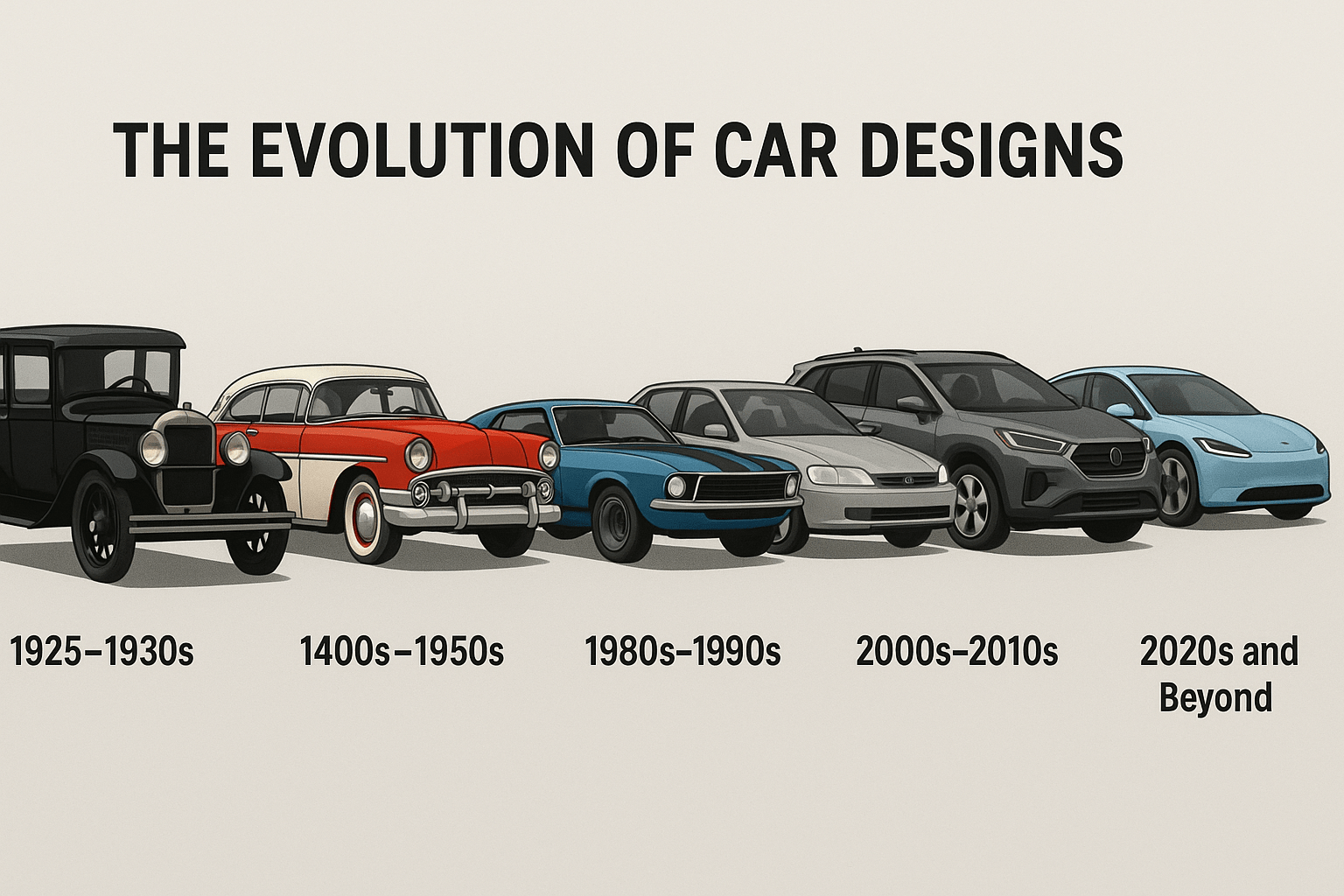The automobile industry has seen incredible transformations over the decades, with car designs evolving to match technological advancements, safety standards, and consumer preferences. Whether you’re a car enthusiast or simply looking to buy a used car, understanding the history of automotive design provides insight into how cars have become the sleek, efficient, and high-performing machines we know today.
1920s–1930s: The Rise of Mass Production
The 1920s and 1930s marked the beginning of modern car manufacturing, thanks to Henry Ford’s assembly line innovation. This period saw the Model T and Model A, which featured boxy shapes, large fenders, and exposed running boards. While these cars were simple in design, they paved the way for automobiles to become more accessible to the public.
Key Design Features:
- Long, rectangular bodies with minimal aerodynamics
- Prominent fenders and large headlights
- Mostly black paint due to Ford’s mass-production efficiency
1940s–1950s: The Golden Age of Style and Chrome
Post-war prosperity in the 1940s and 1950s brought about bold, stylish cars that reflected economic growth and newfound consumer enthusiasm. Cadillac, Chevrolet, and Buick introduced models with curved edges, tail fins, and chrome-heavy detailing.
Key Design Features:
- Wide-body frames with sweeping curves
- Two-tone paint jobs and chrome grilles
- Tailfins (inspired by fighter jets) as a symbol of innovation
1960s–1970s: The Birth of Muscle and Compact Cars
The 1960s and 1970s introduced two major trends in automotive design: muscle cars and compact cars. The rise of American muscle cars such as the Ford Mustang, Chevrolet Camaro, and Dodge Charger emphasized powerful engines, aggressive styling, and long hoods. At the same time, European and Japanese automakers focused on smaller, fuel-efficient vehicles.
Key Design Features:
- Large V8-powered muscle cars with an emphasis on performance
- Compact, boxy models from Toyota and Volkswagen for fuel efficiency
- Bold colours and racing stripes for a sportier appeal
1980s–1990s: Aerodynamics and Modern Innovation
Car manufacturers in the 1980s and 1990s started shifting towards fuel efficiency, aerodynamics, and modern technology. Vehicles became smoother and rounder, reducing wind resistance for better performance. This era also saw the rise of Japanese imports, with brands like Honda, Toyota, and Nissan gaining immense popularity due to their reliability and affordability.
Key Design Features:
- Streamlined, aerodynamic shapes replacing boxy frames
- Advanced digital dashboards and electronic features
- Compact sedans and hatchbacks becoming the norm for everyday drivers
2000s–2010s: Safety, Efficiency, and SUVs Take Over
The 2000s and 2010s saw a major shift towards safety and efficiency. The growing demand for family-friendly and fuel-efficient vehicles led to an SUV boom, with models like the Toyota RAV4, Honda CR-V, and Ford Escape dominating the market. Hybrids like the Toyota Prius also gained traction as consumers sought eco-friendly options.
Key Design Features:
- Advanced safety features like airbags, ABS, and traction control
- Sleek, modern interiors with infotainment systems
- The rise of crossover SUVs for versatility and comfort
2020s and Beyond: The Era of Electric and Autonomous Cars
The future of car design is here, with electric vehicles (EVs) and autonomous technology leading the way. Brands like Tesla, BYD, and Rivian are introducing futuristic, minimalistic designs that prioritise aerodynamics, sustainability, and cutting-edge tech.
Key Design Features:
- All-electric drivetrains replacing traditional combustion engines
- Minimalist interiors with large touchscreen interfaces
- Self-driving technology and AI-powered safety features
Final Thoughts
Car designs have evolved drastically over the past century, adapting to new technologies, consumer demands, and environmental concerns. Whether you’re looking for a classic muscle car, a reliable sedan, or an advanced EV, there’s a perfect option available.If you’re ready to buy a used car that fits your lifestyle and preferences, explore our extensive inventory at Cars4Us. With a wide range of vehicles spanning decades of innovation, finding your ideal car has never been easier!
